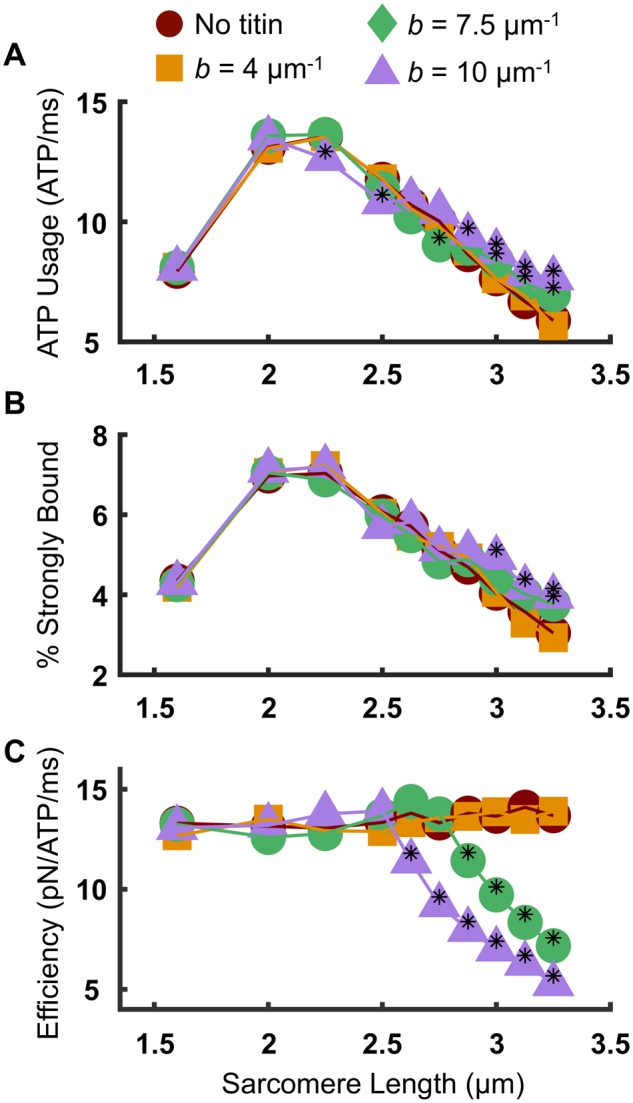Fig. 3.

Effects of titin stiffness on cross-bridge mechanics and energetics. A) ATP usage was quantified by monitoring the number of transitions of each cross-bridge from a strongly bound state to an unbound state. Values reported here reflect the average of the entire cross-bridge ensemble during the plateau of isometric contraction. Stiff titin increases the amount of ATP at long SL compared with the “no titin” case. B) Stiff titin does not affect the % of cross-bridges in the strongly bound state at the plateau of force generation, until SL=3 μm, at which point there are significantly more motors bound for b = 10 μm−1 compared with the “no titin” case and the b = 4 μm−1 case. C) Despite the increase in strongly bound crossbridges, there is a significant reduction in contraction efficiency as measured by the force per ATP during a period of the plateau of isometric contraction. Black asterisks indicate a statistically significant difference from both the “no titin” case and the b = 4 μm−1 case (P < 0.05 using a one-way ANOVA with a Tukey’s post hoc test of significance).
